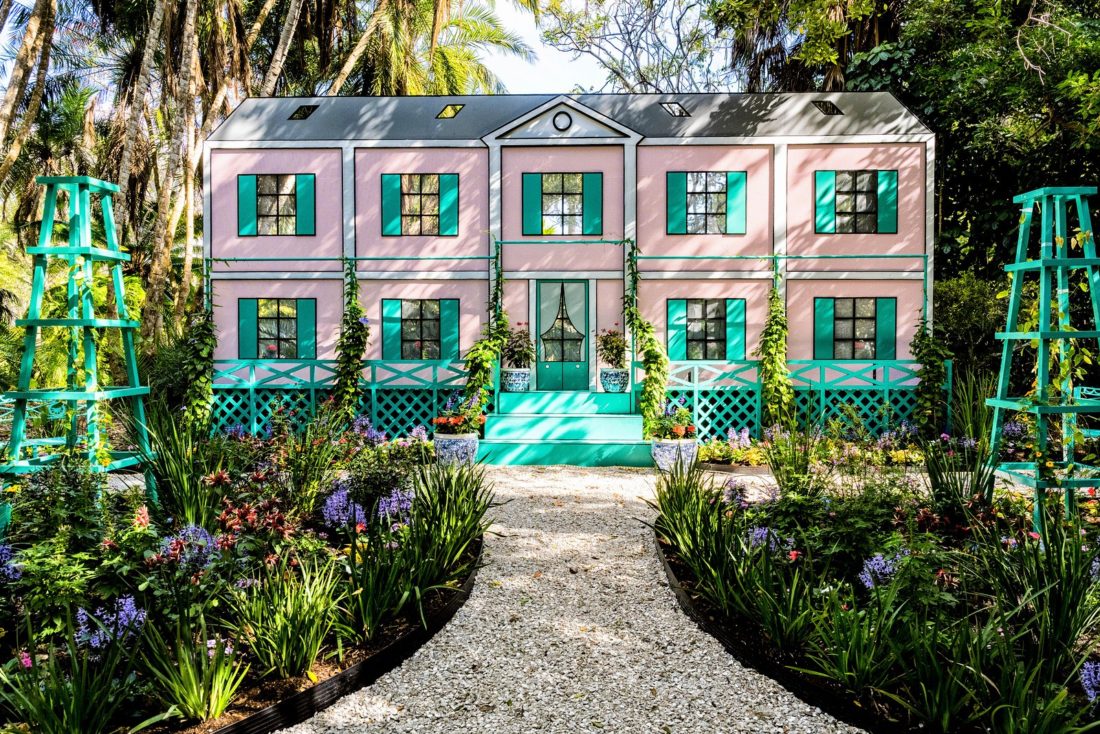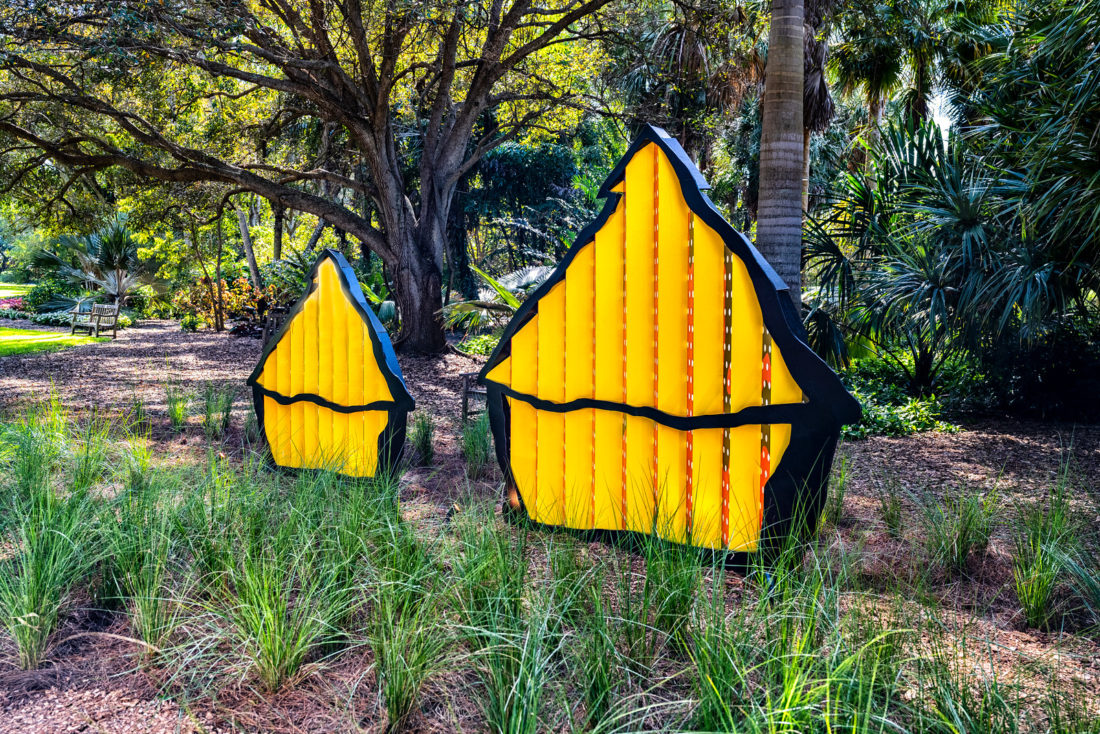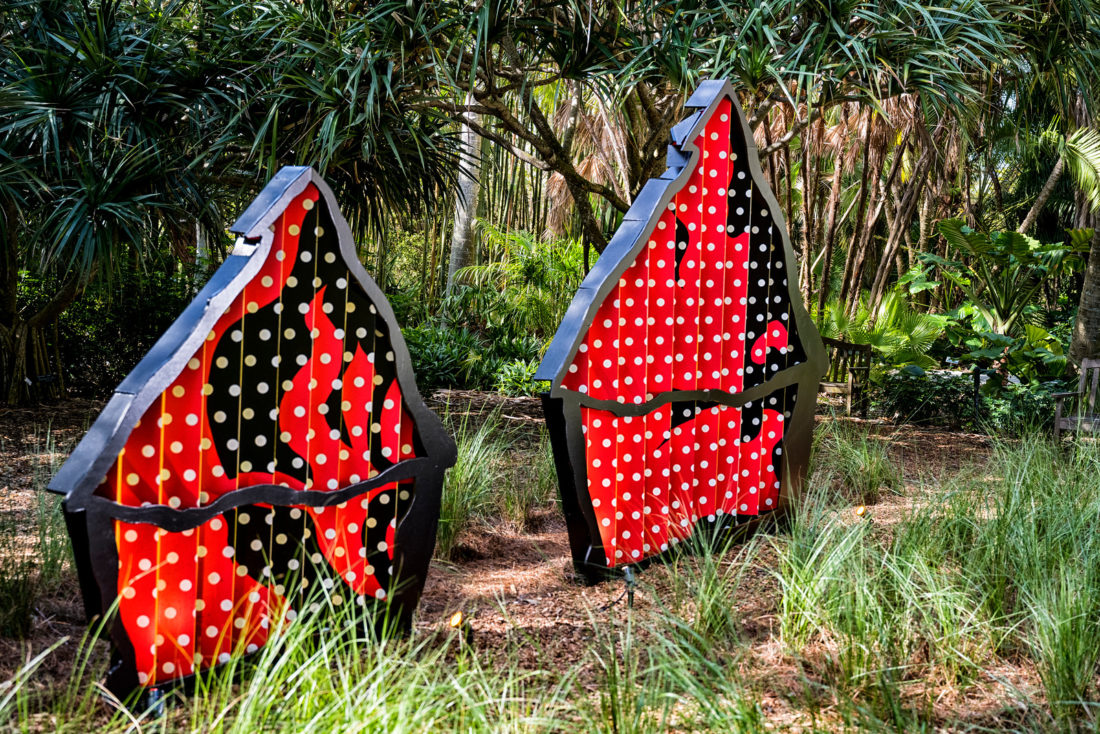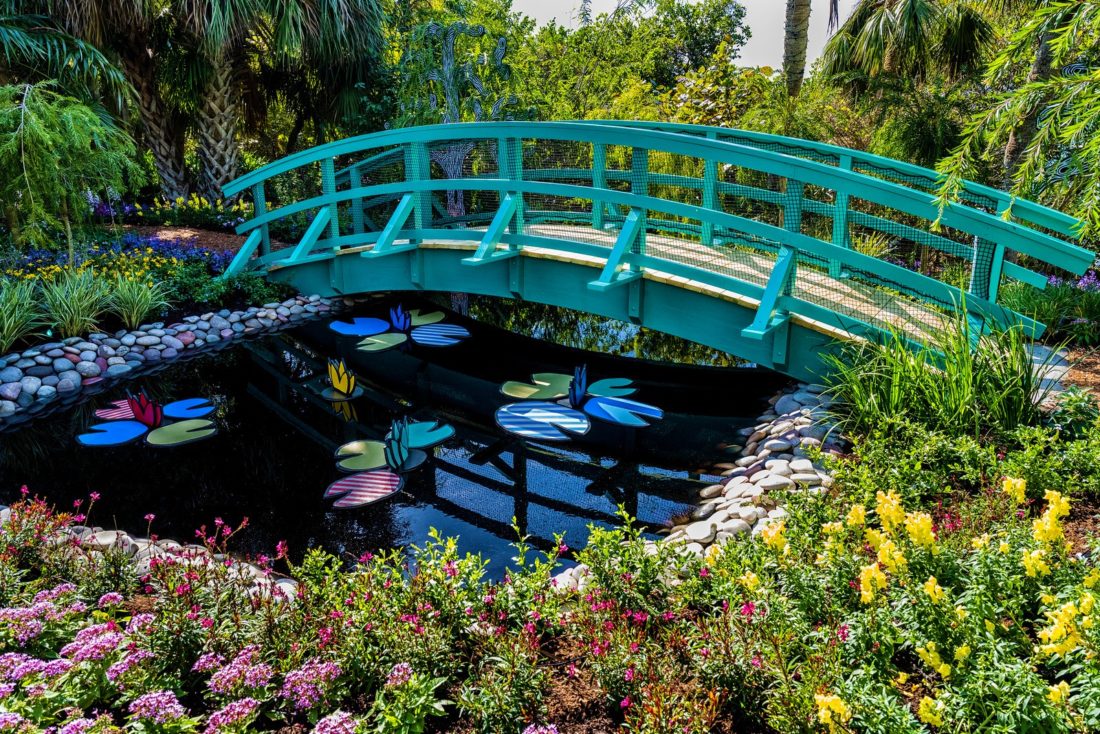“Most people would never think of Roy Lichtenstein and Claude Monet in the same sentence,” says Jennifer Rominiecki, the president of Marie Selby Botanical Gardens in Sarasota, Florida. But the current exhibition at the fifteen-acre downtown campus, Roy Lichtenstein: Monet’s Garden Goes Pop! reveals the surprising connection between the 1960s pop artist and the heralded late nineteenth century impressionist.
The Selby horticultural team has transformed the gardens into Lichtenstein’s take on Monet’s world; Lichtenstein actually twice visited Monet’s home and gardens in the village of Giverny in northern France, and he recreated his own series inspired by Monet’s well-known water lilies and haystacks. “The vignettes in the garden are living artwork, and it’s immersive,” Rominiecki says. “When you put impressionism and pop art in dialogue, you get Technicolor fun.”
Below, take a peek at a few of the garden’s displays, on exhibition through June 27.

“We looked at Monet’s house and thought, how can we interpret that in Lichtenstein’s style?” Rominiecki says. The result is a two dimensional, plywood facade covered in red Ben Day dots—a hallmark of Lichtenstein’s work—that makes the house appear pink from a distance. “And when people get closer, they can literally step into Lichtenstein’s version of Monet’s gardens.”


“Stay with me: This is Selby Gardens’ take on Lichtenstein’s take on Monet’s take on haystacks in the countryside of Giverny,” Rominiecki explains. These are the same haystack pieces, pictured from different angles. It’s an optical illusion that captures Lichtenstein’s rendering of Monet’s haystacks at different times of the day; Lichtenstein used yellow to denote morning and red to denote afternoon. Monet returned to painting haystacks again and again—and his pieces inspired Lichtenstein to create his own two-dimensional haystacks in the 1960s and 1990s.

“We selected plants that would work in this climate but still give that evocation of the bright pop of color,” Rominiecki says of the bright flowers surrounding the garden’s conservatory. “We had a lot of fun with foxglove—a quintessential English garden plant, and with salvia, which does well here and looks like lavender.” Throughout the exhibition, the garden team will swap out plants, ensuring that the art-filled gardens stay in bloom all spring.

Many of Monet’s best-known paintings show the Japanese-inspired bridge in his gardens, and Selby Gardens created their own version. “Most people build a bridge over a pond,” Rominiecki admits, “but here, we built a pond under a bridge.” Large pop-art water lilies float in the water—replicas of Lichtenstein’s treatment of Monet’s water lilies. “Lichtenstein was knocking Monet off his pedestal a little bit,” Rominiecki says. “Are Monet’s water lilies masterpieces? Yes, but Lichtenstein shows that they’re also part of pop culture.”








